Looking to plant some new flowers in your garden? Don’t settle for anything average. The Lily flower is a striking perennial that grows from bulbs. This wonderful flower is famed for its elegant beauty and usually intense fragrance, but did you know that it’s also a hardy plant to grow? Here’s everything you need to know about lily flowers and how to grow and care for them.
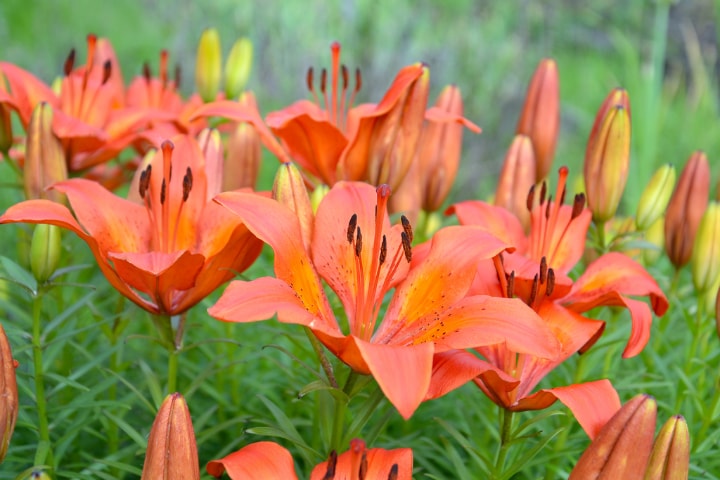
The wide variety of hybrids out there gives you the choice between many different flower types, colors, and growth patterns.
Whether you’re looking for something classic or a modern cultivar, your garden has only to gain.
Learn more about the lily flower and how to grow your own with our beginner’s guide. Awesome colors and fresh digital scents included!
How to Grow Lilies
Why deny your garden or house a fragrant and delightful bouquet of lily flowers? Growing lilies at home is something that anyone can do.
You don’t have to be a seasoned gardener to plant this flower. Lilies may look delicate, but they are pretty tough.
Planting Lily Flowers in the Garden
Give your lily flower a head start by planting it in the fall. But if you don’t get to do it in time, don’t worry—you can also plant the bulbs in spring. Either way, pay attention to how you plant it.
- Place the bulb at least 8” (inches) into a raised bed to anchor the plant well and facilitate drainage.
- If you get daily temperatures over 90°F, plant the bulb at a depth of around 12”.
- Soften acidic soil with some garden lime when planting your lily flower.
That’s about it—planting this flower outside isn’t a big deal!
Growing a Lily Flower from Seed
Things get a tiny bit more complicated if you want to grow lilies from seed.
As with most bulbous plants, growing them from seed can be a challenge, though you can still get good results with a moderate amount of effort.
Before you start, bear in mind that it may take a seed-grown lily plant 18 months or more to bloom. If you’re the patient type, that’s great.
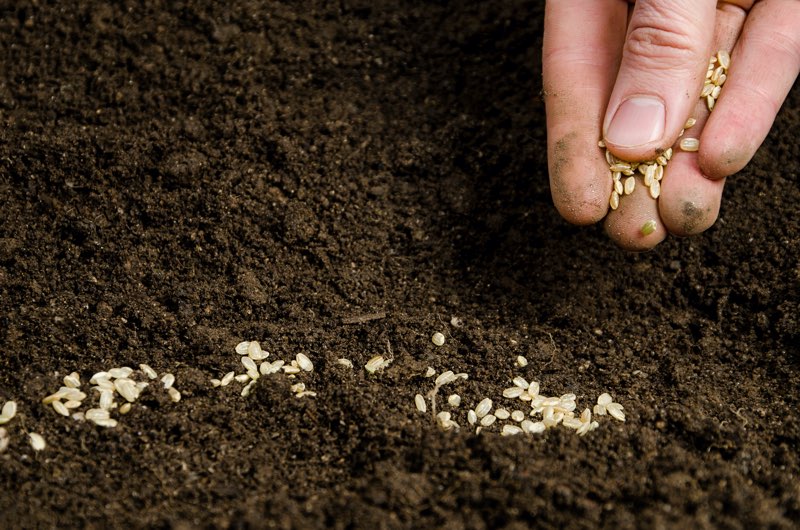
Tip: When buying lily flower seeds, look for epigeal seeds. These grow faster than hypogeal seeds.
Here’s how to grow epigeal lily flowers:
Step 1 – Get the Right Pot
Choose a pot that’s at least 4” deep. Shallower pots won’t do.
Step 2 – Prepare the Potting Mixture
Fill the pot with a light potting mixture that contains vermiculite. Soak the grow medium in water before planting and let it dry entirely.
Step 3 – Ensure Good Drainage
You can add a thin layer of pebbles at the bottom to facilitate drainage. It goes without saying that drainage holes are a must.
Step 4 – Sow the Seeds Properly
Sow the seeds about 1” apart and then cover the container and move it to a warm windowsill. Seeds should sprout in around 14 days, after which you should remove the covering.
Step 5 – Fertilize
You can use a natural fertilizer such as organic fish oil every two weeks.
Step 6 – Help the Flower Grow
As the leaves appear around 4 weeks later, move the container outside to a protected place that gets full sun. Water regularly and apply mulch and a fungicide.
Step 7 – Practice Patience
After the arrival of spring, remove the mulch and wait for the plants to grow, put up more leaves, and flower.
If you end up with hypogeal lily flower seeds, plant the seedlings in early summer and let them germinate for three months.
Once the bulbs grow, put them in a bag and refrigerate them during winter. In the spring, you can plant them the same as epigeal seeds.
Important: Hypogeal lilies may take 4 years to bloom, but when they do, the flowers are often spectacular.
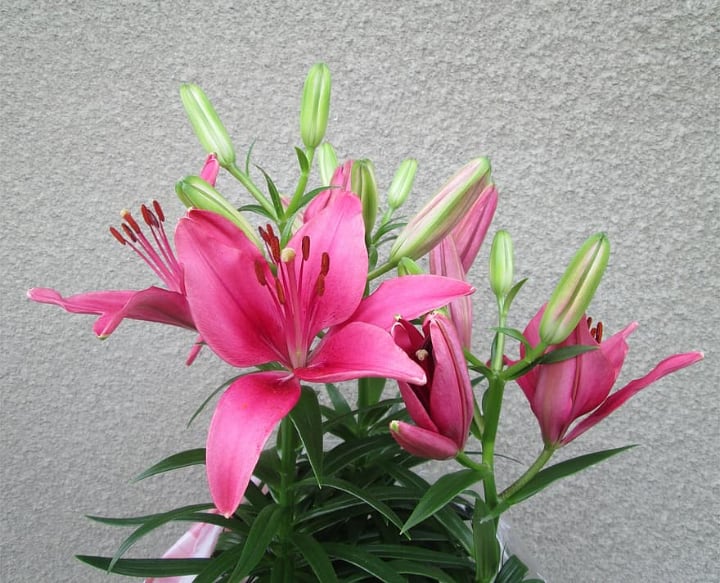
How to Grow Lily Flowers in Pots
Lily flowers grow well in pots. But you may want to avoid species that grow beyond 2’ tall or else provide them with support. Here are our recommendations.
Step 1 – Get the Bulbs Ready
Plant the bulbs in early fall or spring. If the bulbs have not been forced into dormancy, you’ll have to chill the bulbs in the fridge for about 8-12 weeks.
Step 2 – Plant the Bulbs
Plant large bulbs into deep, 8-9” containers and small ones into 9-10” containers. Make sure to place a layer of small stones or similar drainage material at the bottom of the pot.
Step 3 – Space and Position the Bulbs Properly
Allow for 2” between bulbs. Plant the bulbs with the pointed tip up at a height equal to the depth of the bulb.
Important: Make an exception for species that push forth growth from the stem—plant their bulbs about twice as deep.
Step 4 – Add Some Compost
Top the potting medium with a soil-based compost. After planting the bulbs, keep the pot in a warm place and ensure the compost is moist but not wet.
Step 5 – Shelter Them from the Cold
During the winter, keep the potted lily flower indoors.
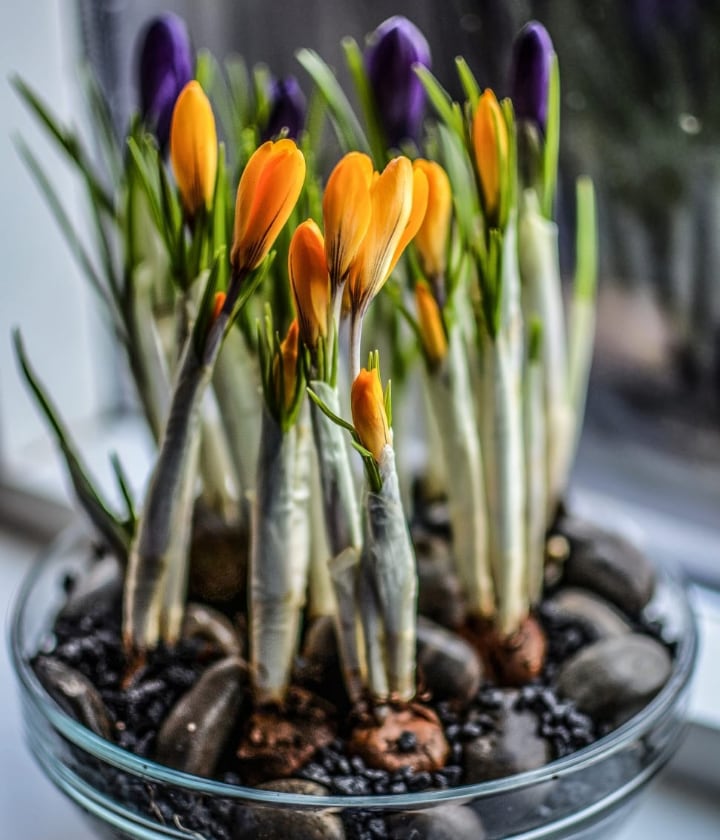
Step 6 – Repot in the Fall or Move to the Garden
To keep the flower alive, you want to repot it in the fall after the foliage dies down. Choose a larger pot. Also, add new compost and some fertilizer. Alternatively, you can plant the bulbs in the garden.
Are Lily Flowers Toxic?
Lily flowers are very poisonous to cats and can poison dogs, too. They can cause acute kidney failure if ingested.
If you choose to grow them, it’s important to place them where small cats are not likely to come into contact with them.
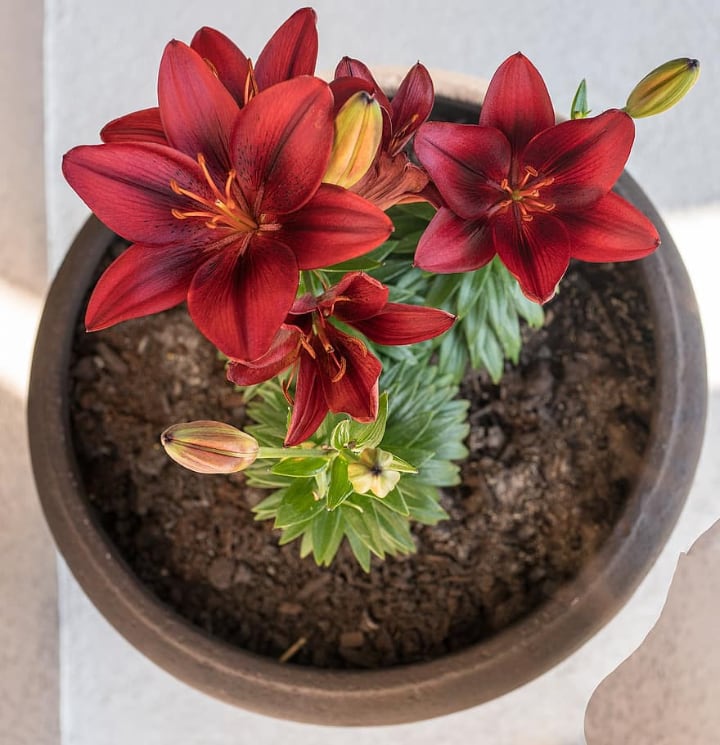
Warning: Lily flowers can also pose risks for babies and other humans that may ingest them.
Lily Flower Care
Do you like flowers more than you like caring for them? Well, you’re probably not the only one.
But growing a lily flower isn’t the hardest thing in the world. There are many plants out there that are more pretentious.
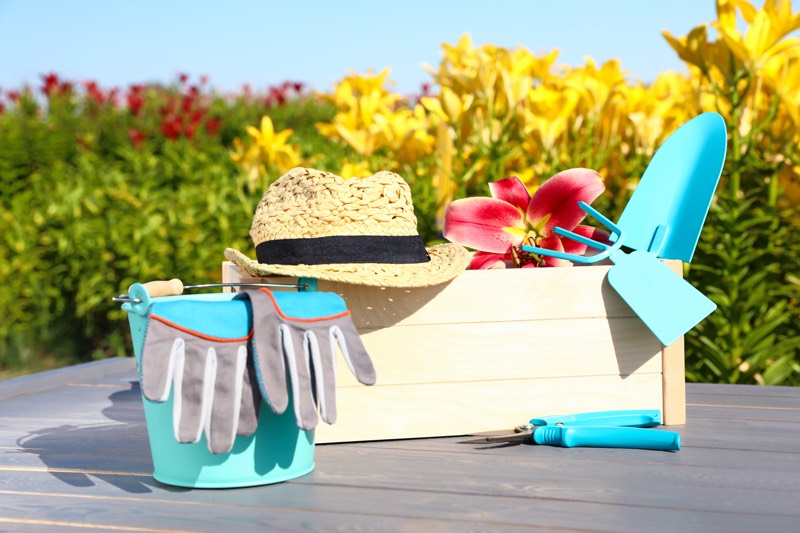
Here are the essential lily flower care tips you need to know. Bear in mind that different species may have specific requirements.
Soil
The one key thing you need to do to keep a lily flower happy is ensure great drainage conditions.
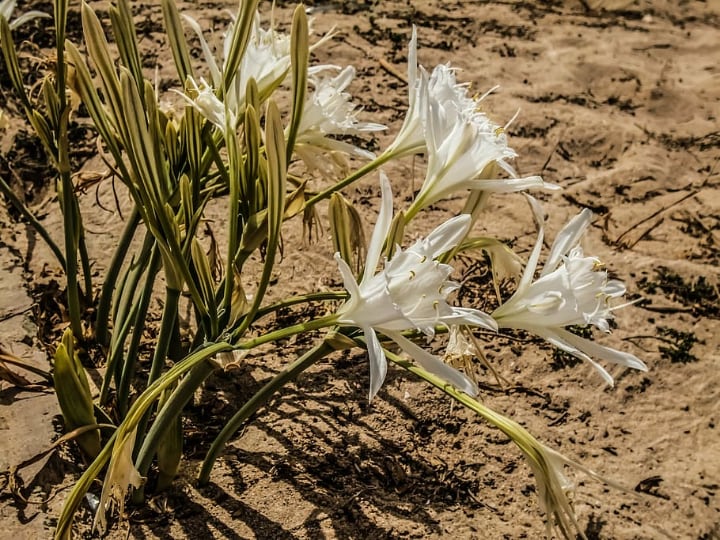
Lilies will also be thankful if you plant them in rich soil. But you don’t need to overfertilize them.
Tip: Aim for a pH level between 5.5 and 6.5—that’s what most lilies like best!
Light
Most lilies need at least 6 hours of sun every day. But this is true for the upper part of the flower—the plant thrives when the roots stay cool.
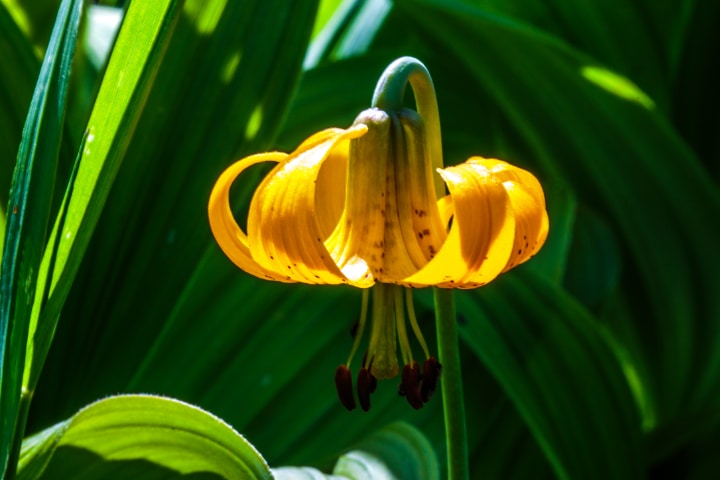
A good strategy is to plant a lily flower with tall grass or other low-growing plants. As a rule, varieties that thrive in the wild tend to handle light shade better.
Temperature
The majority of lilies do best between -10° to -20°F in winter and 10-20°F during the growth period. They are sensitive to both cold and hot temperatures beyond this range.
But that doesn’t mean you can’t find varieties that can handle warmer weather—look for hybrids or cultivars adapted to your area.
Watering
Remember that bit about how drainage is important for lily flowers? Lilies don’t need much water.
But it’s best to ensure that the soil remains evenly moist. Letting it completely dry out can damage the roots.
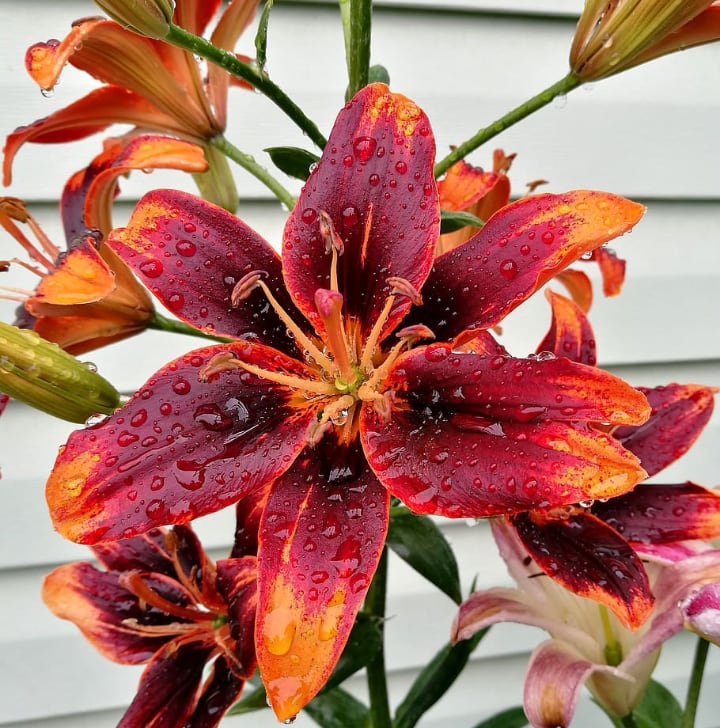
Tip: Give your lilies more water during dry spells. Pay special attention to watering late-blooming varieties that keep on growing during the height of summer.
Fertilizer
If you have planted your lily flower in good, well-drained soil rich in organic matter, you can pretty much forget about fertilizer.
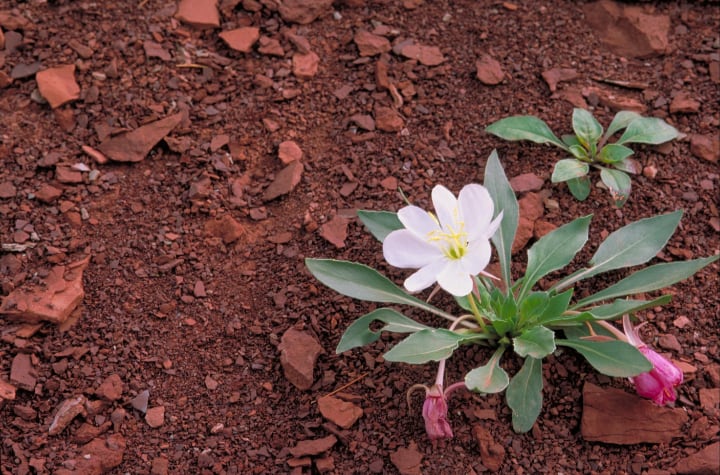
But if you have your doubts about the soil, use a high-potassium fertilizer twice a month from planting. Keep using it until about 6 weeks after the plant blooms.
In spring, you can boost the plant’s health by adding a layer of compost. Also, consider adding bone meal or another bulb food before the flowering season if your plant has had few or very small blooms.
Lily Flower Meaning
True lilies symbolize purity, chastity, virtue, youthful beauty, fertility, motherhood, passion, renewal, drive, and royalty—among other things.
The word “lily” is derived from a Greek word that in turn traces its history to one of the first known words for flower.
Indeed, for many people around the world, the lily is one of the first plants that the word “flower” brings to mind.
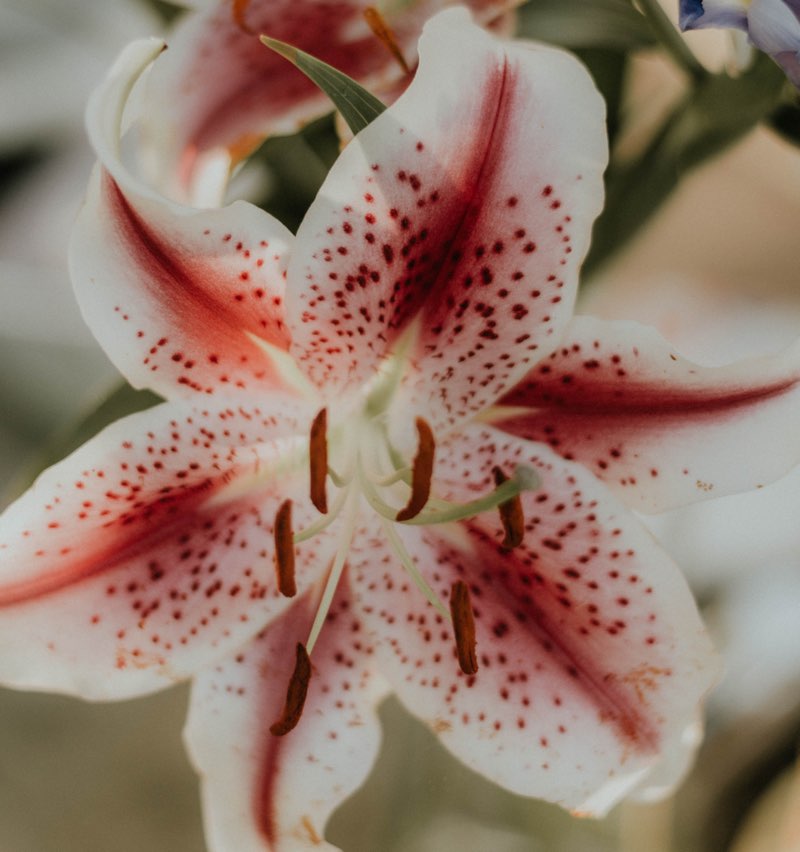
The lily flower often appeared in both Greek and Roman religious myths. In an enduring myth, the flower was created from the breast milk of Hera, the wife of Zeus.
Meantime, Venus, the goddess of beauty, envied the lily’s purity and wished to spoil it—so, she caused the pistil to grow from it. Today, most people would agree that she failed.

Throughout the centuries, the lily has been an enduring symbol of royalty. The fleur de lis symbol used by French and other monarchs was based on a variety of lily.
In the Far East, the lily has been put to more practical uses. The Chinese believe it relieves heartache, which is why they often give it as a gift to those who experienced loss. At the same time, it remains a popular wedding plant.
Lily Flower Colors Meaning
We’ve looked at the general meanings of the lily flower. Now let’s zoom in on the special meanings that each lily color carries.
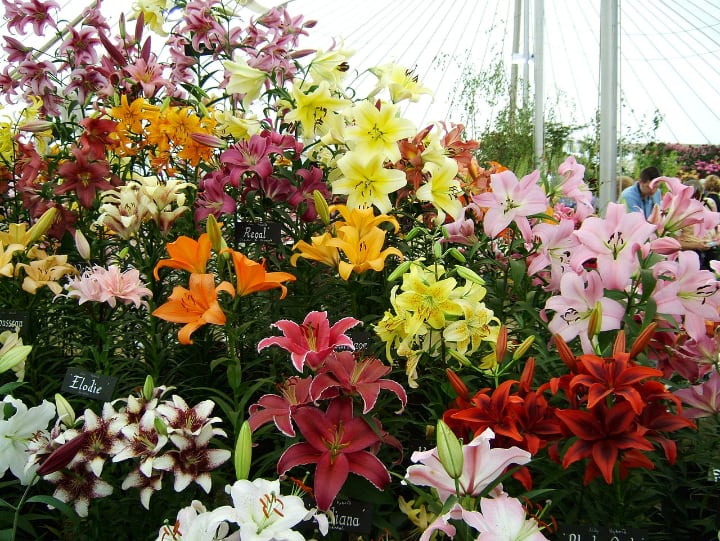
- White lily flowers stand for purity and modesty, which makes them an inspired choice for weddings or funerals. White lily and rose flower arrangements are a popular choice for solemn occasions.
- Yellow lily flowers symbolize joy, brightness, and happiness. They are great when you want to tell someone that you value their friendship or to express your appreciation for a family member.
- Orange lily flowers evoke confidence, honor, warmth, and energy—they are perfect to give to someone special you look up to, or to acknowledge achievement.
- Pink lily flowers symbolize romance and love or compassion and admiration, depending on who you are giving them to.
- Purple lily flowers symbolize pride, accomplishment, dignity, and royalty—they are a special gift for a special occasion.
Types of Lilies
Lilies are commonly grouped into divisions based on their place of origin and shared characteristics.
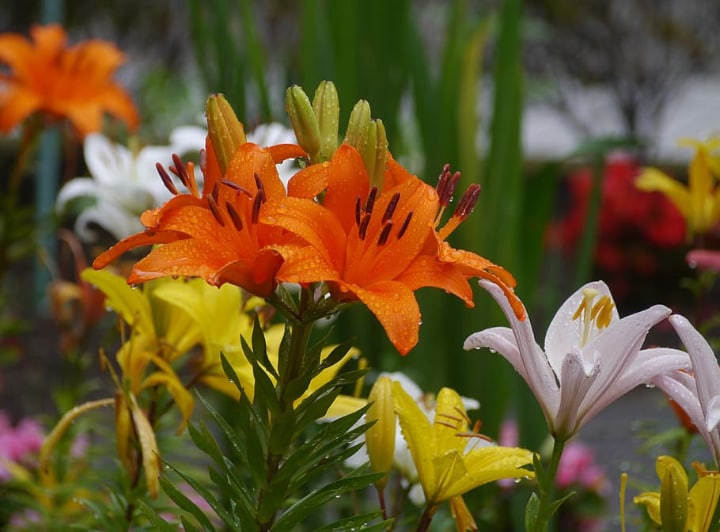
Within each division, there are different species and cultivars you can choose from. Here are some of the most popular types of lilies you should know about.
Asiatic Hybrids
Asiatic hybrid lilies come in a wide range of colors, are easy to grow, and bloom before most other lilies. Also, they’re cold hardy.
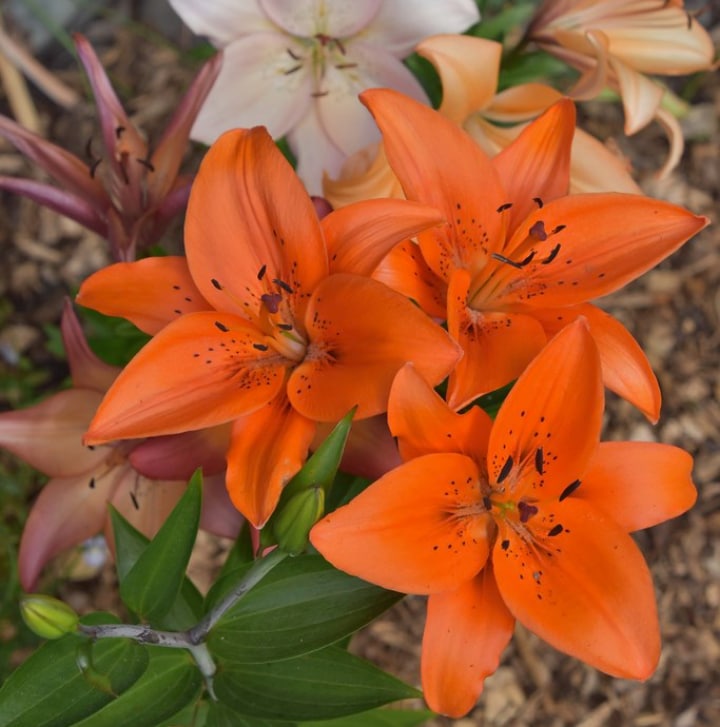
On the other hand, Asiatic hybrids don’t carry the rich fragrance of other lilies.
Most varieties can grow up to 4” and they do well in containers. If you plan to start growing your first lilies, Asiatic Hybrids are a great choice.
Forever Susan Lily Flower
The summery Forever Susan lily wears deep orange and purple in a striking combination.
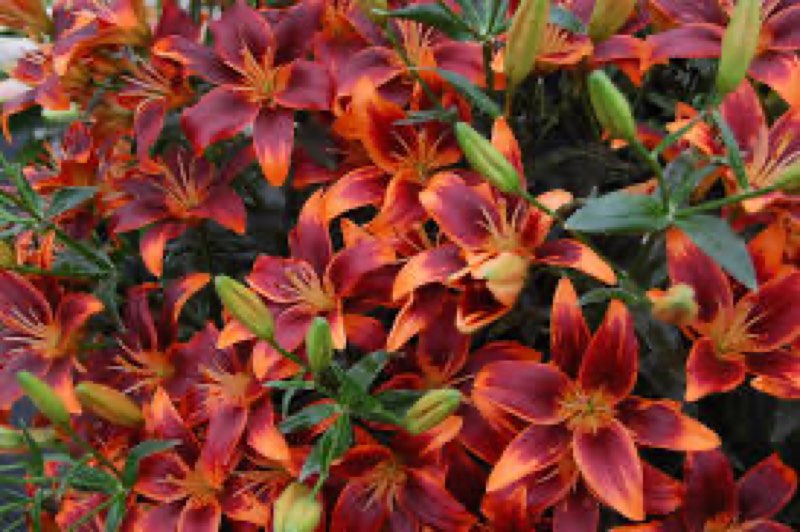
It’s a delight to see it grow before your eyes.
Tiny Bee Lily Flower
This dwarf lily with spotted golden flowers is a great example of the appeal of Asiatic hybrids.
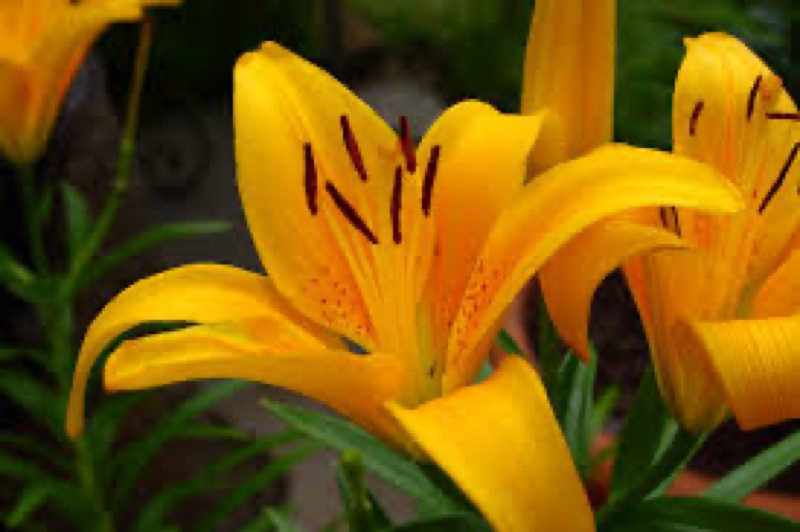
You can grow it in pots as well as in the garden—it’s great for borders.
Elodie Lily Flower
Another Asiatic favorite, this pollen-free, baby-pink lily looks precious. It’s one of the most memorable pink varieties around.
Martagon Hybrids
These early-blooming hybrid lily flowers prefer shade and cool weather over hot and humid climes.
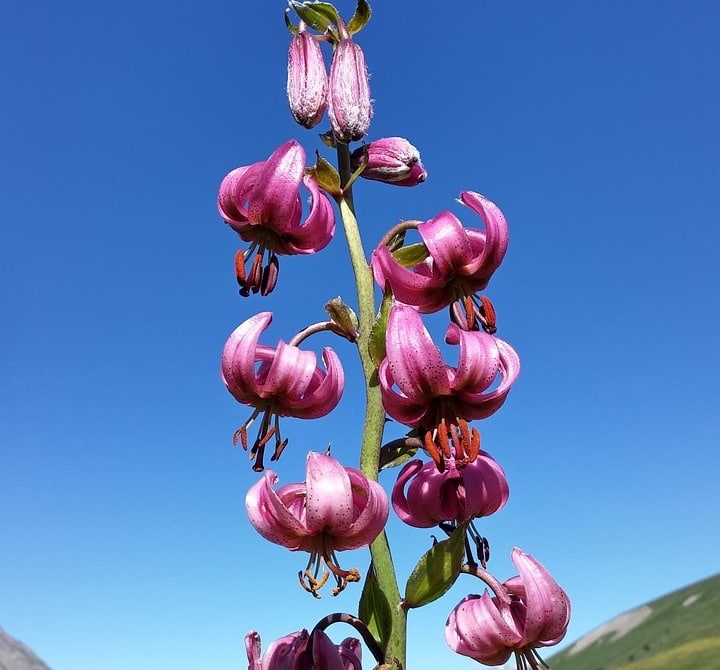
In addition to their curious downward flowers which seem to defy gravity, they have interesting spiraling leaves.
The thing to remember about Martagon hybrids is that they need some time to become established. As with most other varieties, it’s best to grow them from cuttings rather than seeds.
Turk’s Cap Lily Flower
With their rich flowers and gravity-defying geometry, these Martagon hybrids can be a special touch to your garden.
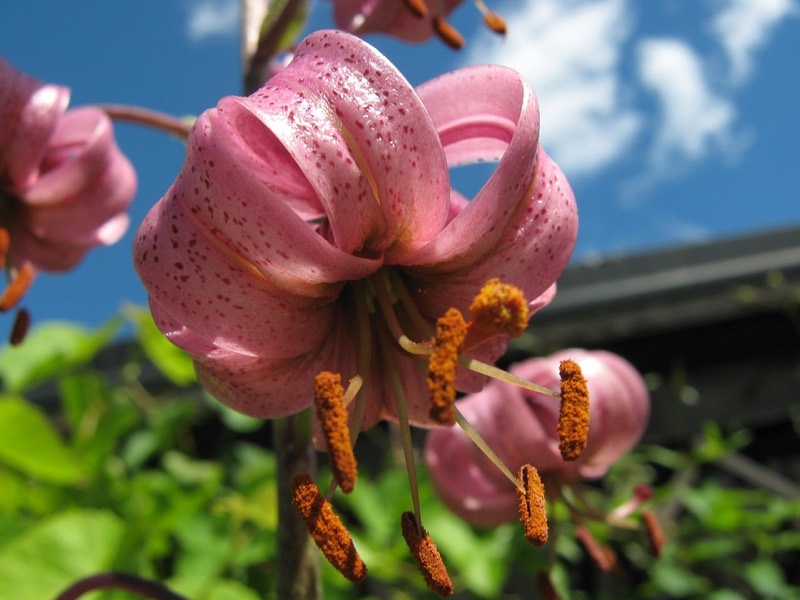
Can you guess where these flowers got their name from?
Candidum Hybrids
Candidum hybrids are known for their fragrant white flowers and yellow base. They are early bloomers that can put on a show in your garden starting in late spring.
These lilies are some of the first that have been mentioned by the Greeks (Lilium candidum). You can find them throughout Europe.
Madonna Lily Flower
The beautiful white Madonna lily epitomizes the grace and elegance of the white lily. Known as one of the oldest garden flowers, this variety has bright green basal rosettes during winter and shallow-rooted bulbs that give it a unique appearance.
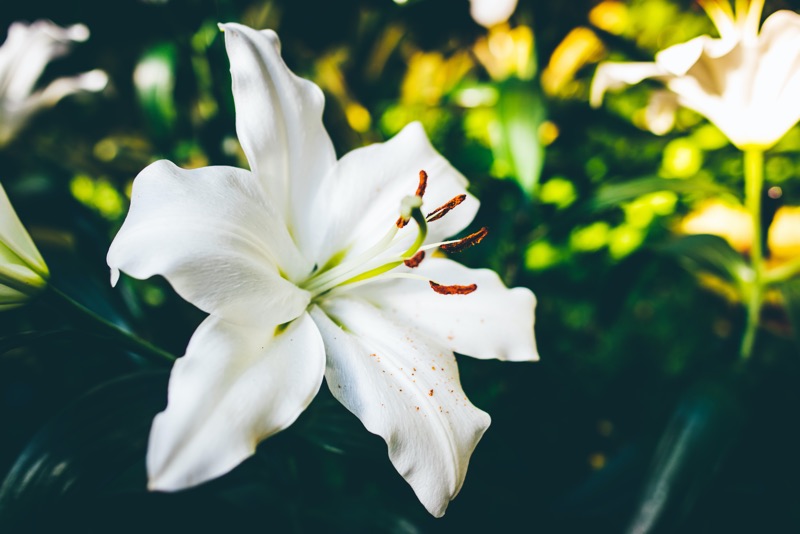
In late spring, it produces scented trumpet-shaped flowers. You’ll envy its effortless simplicity.
June Fragrance Lily Flower
This popular cultivar has creamy white flowers and a fragrance to remember. It’s a great Candidum Hybrid for beginners.
Oriental Hybrids
Oriental hybrids take their time blooming—you won’t be able to admire their flowers until late summer.
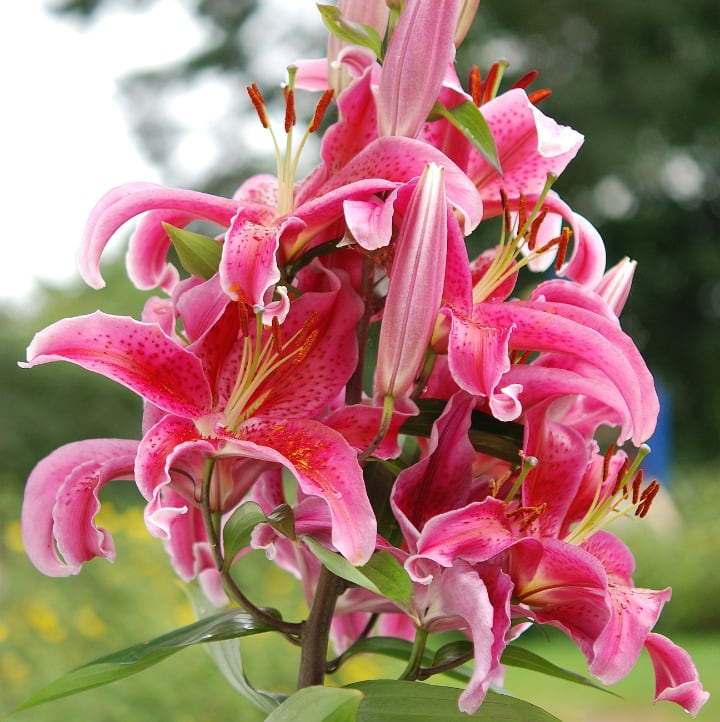
But when they appear, their 6-8-inch-long blooms and showy petals make the wait worthwhile. The blooms can last into the fall. And the best part is that they have a wonderful fragrance.
Tip: they grow best in non-alkaline soil.
Acapulco Lily Flower
This beautiful bright pink lily flower has an exotic feel to it that can enliven any garden. It’s great as a cut flower, too.
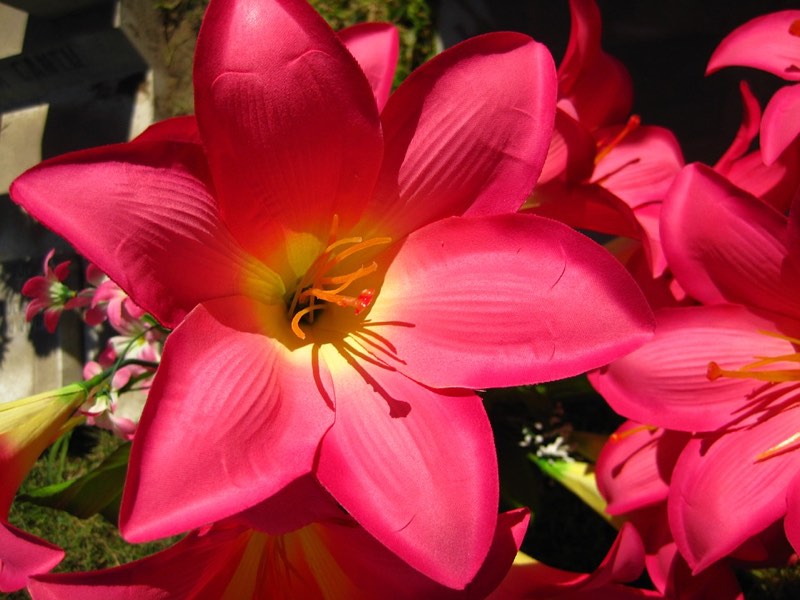
The lightly-scented trumpet-shaped flowers bloom in late summer while its narrow leaves remain green in color throughout the season.
Casablanca Lily Flower
Another Oriental classic, the Casablanca lily wears pure white petals. Add to that a rich fragrance, and you’re looking at a great flower for weddings.
Stargazer Lily Flower
This flowery butterfly-magnet comes in dizzy pink hues and has a scent to remember. It’s one of the most beautiful pink varieties you can find.
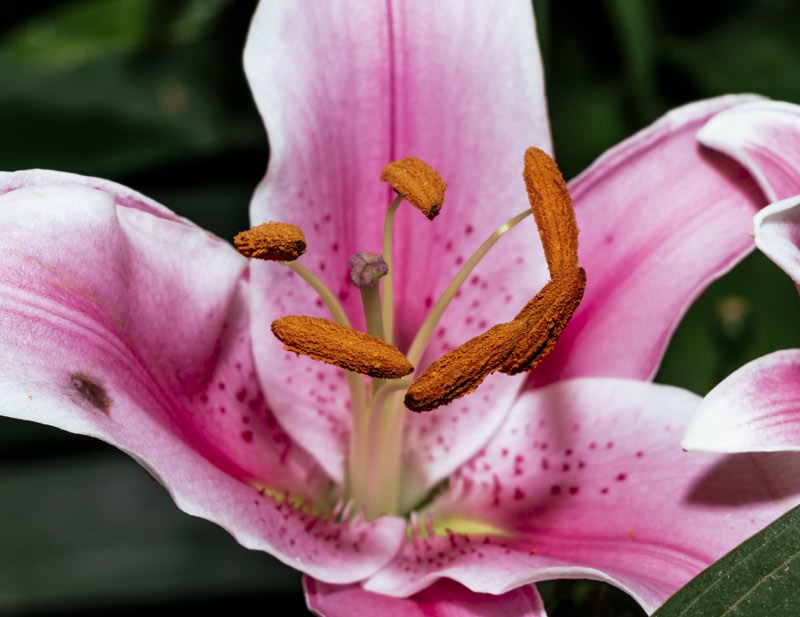
American Hybrids
The flowers in this category bloom in late spring or midsummer depending on whether you grow them in a warm or cool climate.
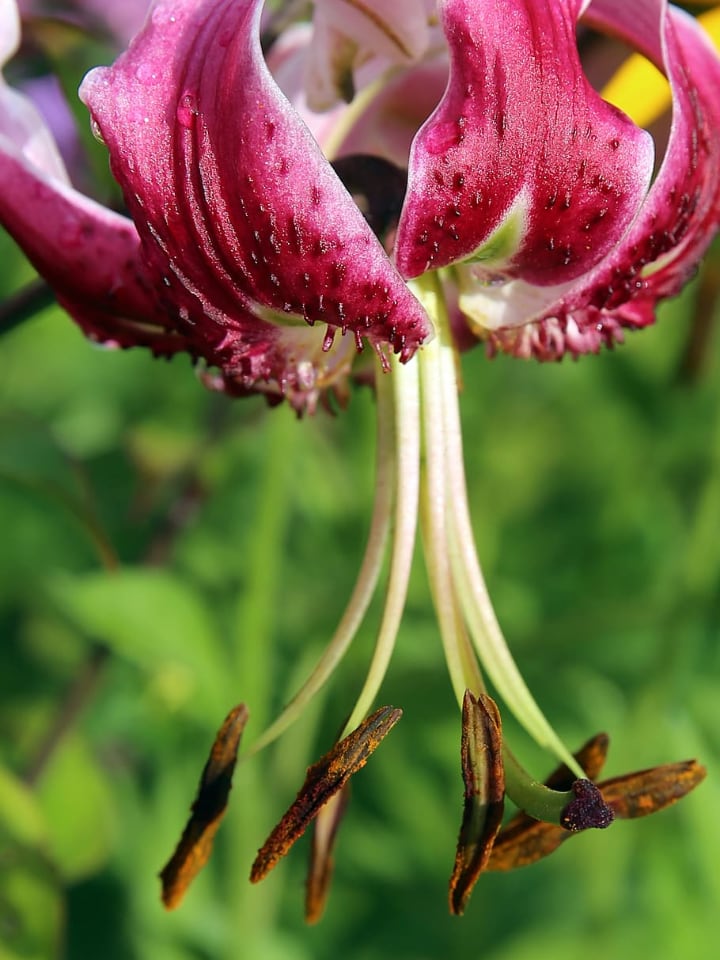
As you may guess from their name, they can be found throughout North America. Some varieties have downward-pointing flowers similar to the Martagon hybrids.
Tiger Lily Flower
One of the most popular lily flowers in the world, this one needs no description. The Tiger Lily has beautiful, black-spotted petals (that’s why “tiger lily”) and downward-facing blooms.
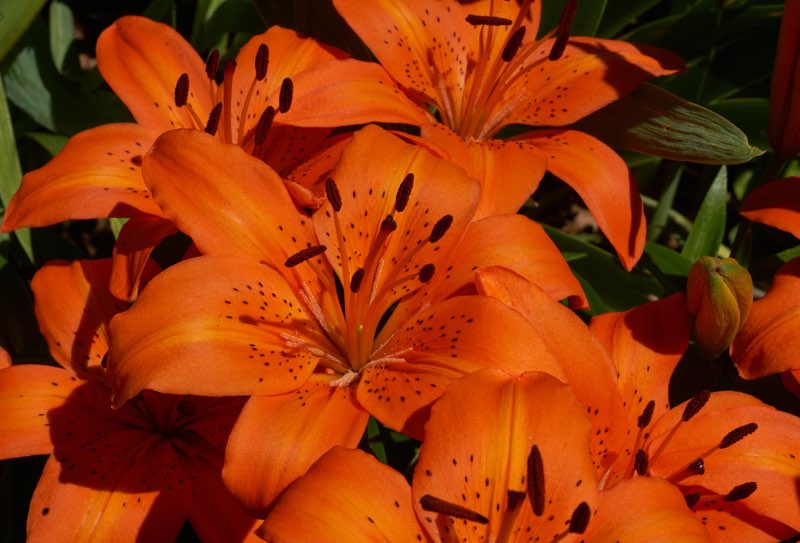
It’s an easy to grow flower that, if given space, can become up to 3 to 4 ft tall. If you want a showstopper in your garden, look no further.
Canada Lily Flower
With its striking upturned flowers, Canada lily is an unpretentious beauty. It often grows on meadows and is also known as a wild yellow lily or meadow lily.
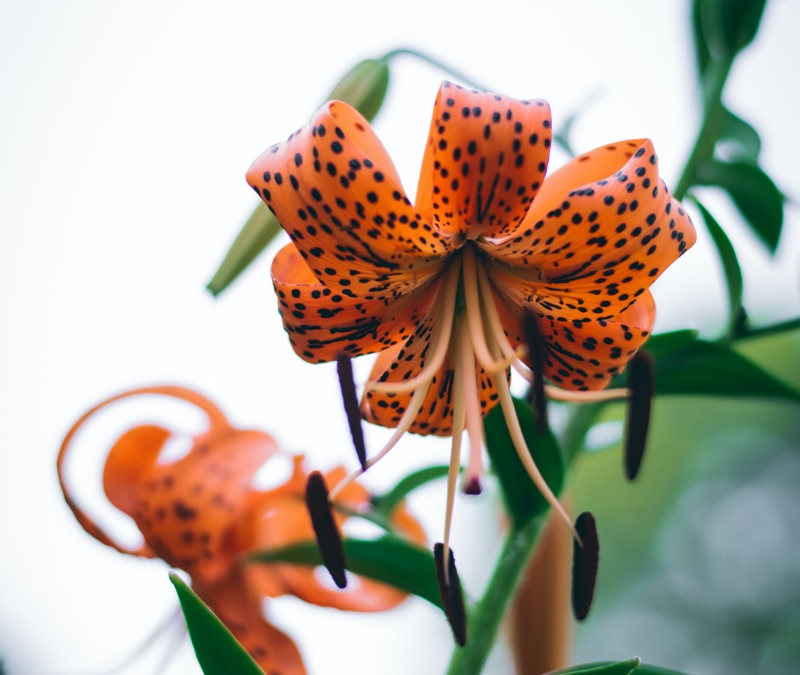
You can recognize this variety by its lance-shaped leaves and beautiful yellow, orange, or red, trumpet-shaped flowers that bloom in mid-summer.
Longiflorum Hybrids
Unlike other lily flowers, longiflorum hybrids grow better in pots from seed than in the garden. Most hybrids are dazzlingly white and make for a striking sight.
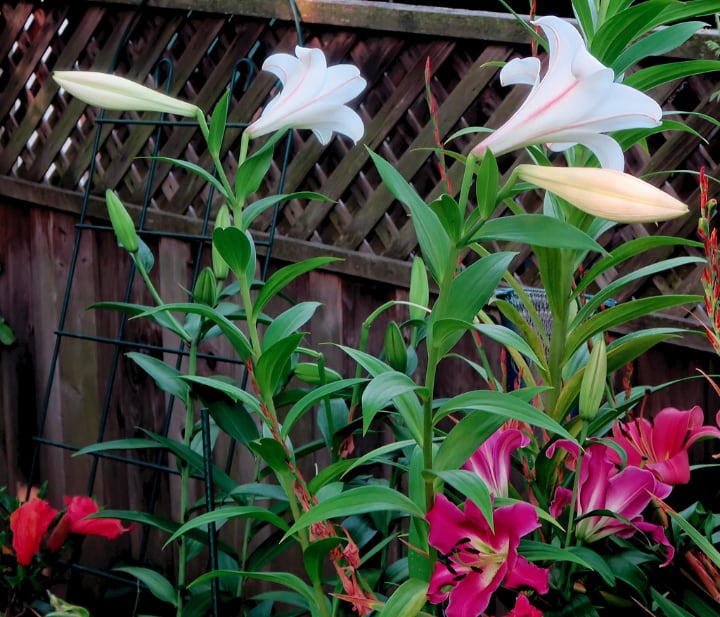
The large flowerhead has trumpet-shaped flowers and is deeply fragrant. It’s the most popular type of lily for Easter decorations.
Easter Lily Flower
Probably the best-known lily in this group, the Easter lily is mostly used for decoration. But you can also grow it in the garden without too many problems.
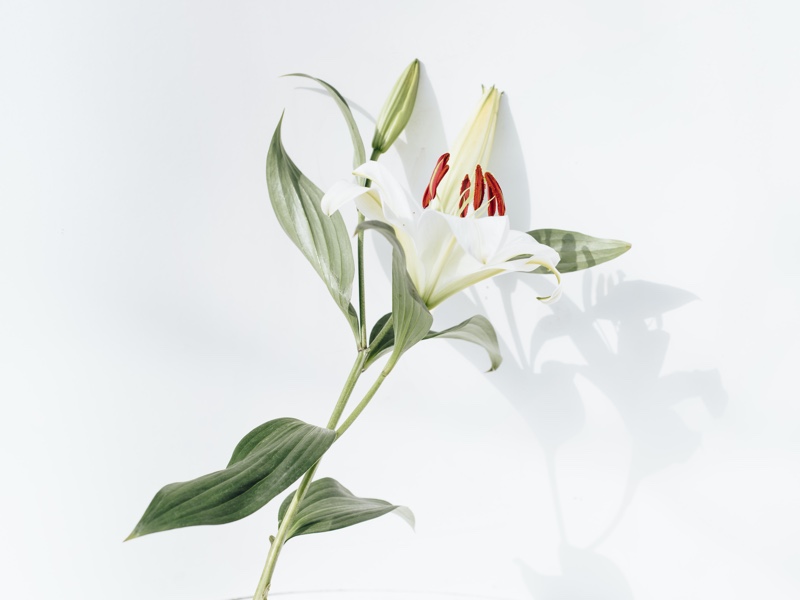
This lily flower variety is named after Easter because it is seen as a traditional Easter-time gift. It produces beautiful white trumpet-shaped flowers that not only look nice but also carry a wonderful fragrance!
Good to know: This flower is associated with purity, faith, and devotion.
Trumpet and Aurelian Hybrids
These two varieties are classified together because they share the same characteristics. Both bloom between July to August and like to stay in the sun.
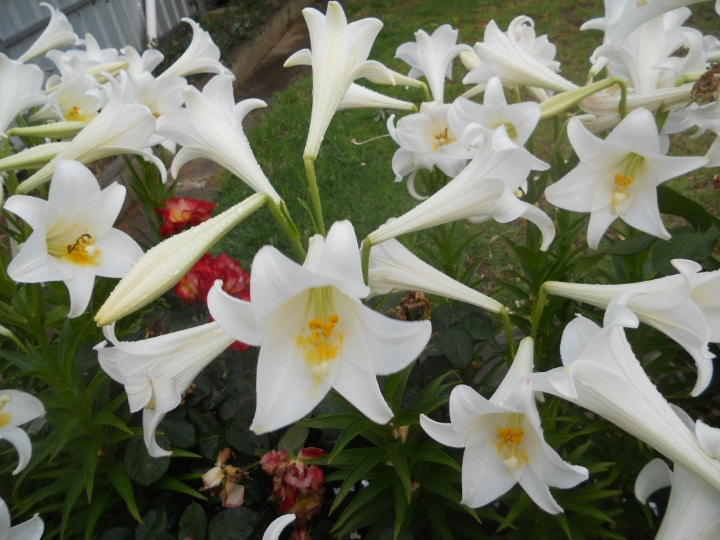
In cool climates, they don’t do well in gardens. Similarities extend to their appearance, most notably to their trumpet-shaped petals.
But while their flowerheads bring to mind some Longiflorum hybrids, they come in a variety of colors including deep yellow and pale purple tones.
African Queen Lily Flower
With its beautiful apricot-colored petals, the African Queen lily is one of the most spectacular trumpet hybrids around.
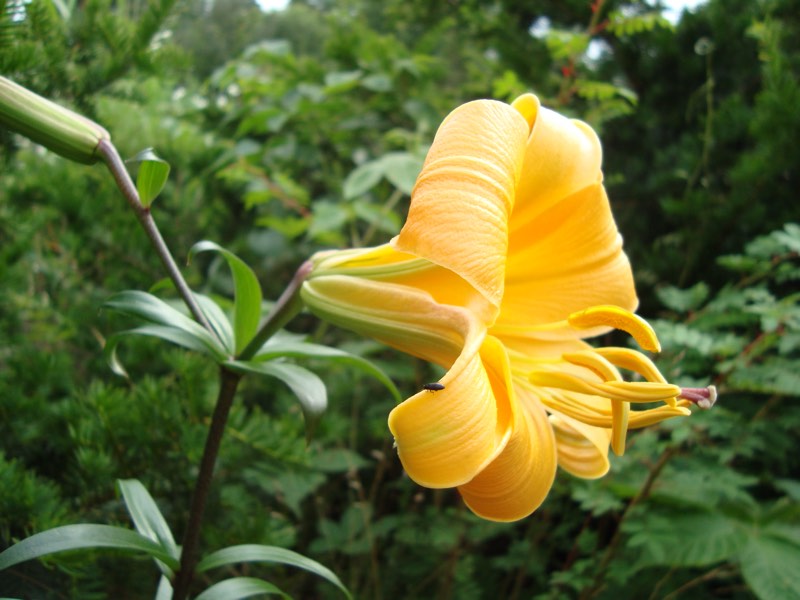
It blooms throughout midsummer on sturdy, straight stems up to a height of 6′. It’s not only a visual showstopper but also has a delightful fragrance.
Good to know: This lily flower enjoys the sun, which makes it a perfect perennial for hot climates, as long as the soil is well-drained.
Lilium Regale Lily Flower
This variety is known for its spectacular scent and huge pure white flowers with golden centers. It can produce up to 20 blossoms per stem.
You can easily grow these lilies in well-drained soil in full sun to part shade. It is more drought-tolerant than many other types of lilies.
Interdivisional Hybrids
Interdivisional hybrids are some of the most interesting lily flowers around. They’re created from combining flowers from the divisions we’ve already mentioned.
Crosses between Oriental and Trumpet/Aurelian lilies produce large-flowered, strongly-scented, durable hybrids known as OTs.
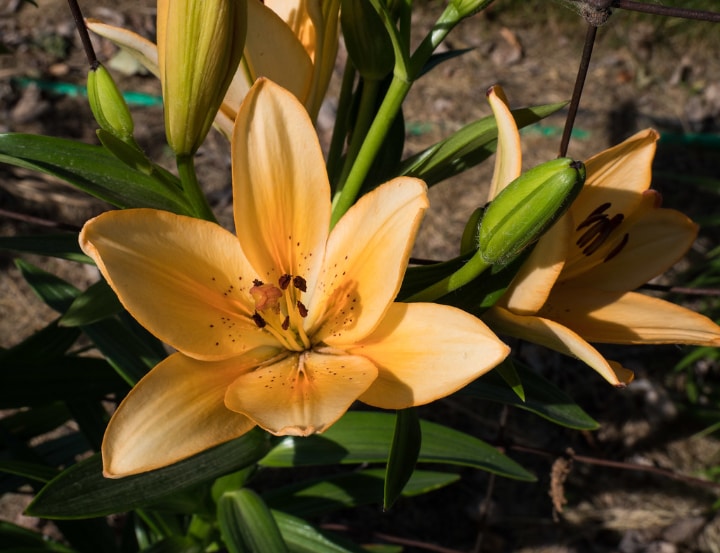
Hybrids between Longiflorum and Asiatic lilies create LA hybrids, which have flat, large flowers and exquisite coloring.
These are just some examples of interdivisional lily flower hybrids. There are many more out there for you to discover.
Other Types of Outdoor Lilies
A few popular plants look a lot like the lily and are commonly called by this name, but they are not true lilies. Probably the best-known ones are the Cala lily flower and the water lily flower.
Important: If you plan to these, look for specific instructions for their planting and care.
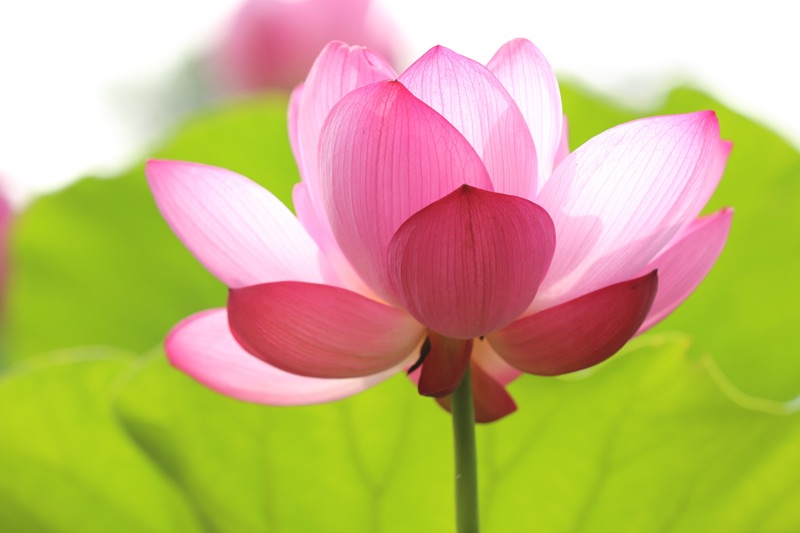
Last but not least, it’s worth mentioning native lilies or species that grow in the wild and which form the basis of the hybrid groups we just mentioned.
Wild lily flowers can be remarkably beautiful and quite widespread in forests, grasslands, or marshlands as they propagate through seed. But usually, they are much harder to grow in the garden than hybrids.
Lily Flower FAQ: Gardeners Ask, We Answer
Here are some of the most common questions we’ve heard about lily flowers.
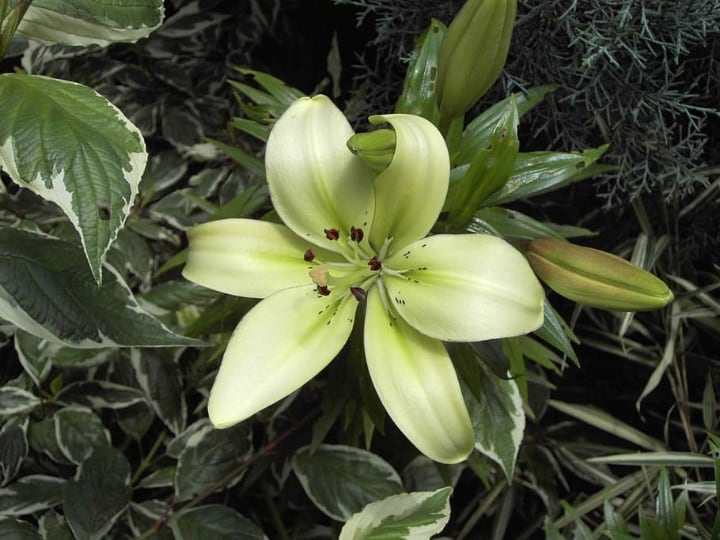
What does a lily flower symbolize?
Lily flowers carry many different meanings including purity, chastity, virtue, youthful beauty, fertility, motherhood, passion, renewal, drive, and royalty. This makes them an apt choice for many different occasions, both formal and informal.
Do lilies die after flowering?
Lilies bloom once per season and then they come back next year. To help them save energy and came back beautifully, remove the faded flowers and the stem but not the leaves. Learn more about how to grow lilies.
Where do lily flowers grow?
Lilies grow mostly in Europe, Asia, and North America. You can find them in grasslands, forests, and mountains. Different varieties thrive in specific conditions, so always read the planting and care instructions.
What are the different types of lily flowers?
Lilies come in many varieties, including Asiatic lilies, Trumpet lilies, Oriental lilies, American lilies, Martagon lilies, Longiflorum lilies, and Interdivisional lilies.
Grow Your Own Lily Flower
“Faith is like a lily, lifted high and white,” English poet Christina Rossetti once said. Growing a lily does require a bit of faith in your skills as a gardener.
But it’s really not that hard. And there are so many wonderful varieties to choose from that you will always find a hybrid that’s right for you.

There’s really no excuse not to try growing a lily at least once. Whether you plant it indoors or outdoors, the elegant beauty of this flower and its often intense fragrance will reward you.
Have you ever tried to grow a lily before? We’d love to hear about your experience. Drop us and comment and share with us any tips you may have. Until next post!

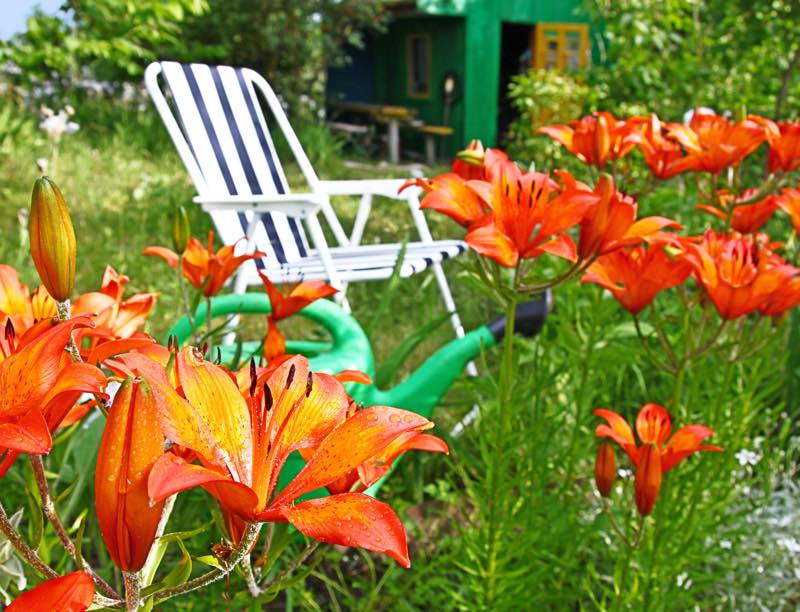

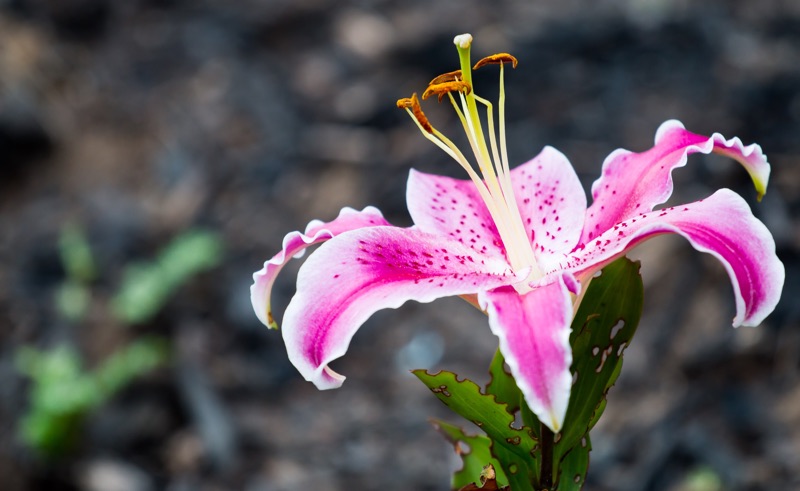
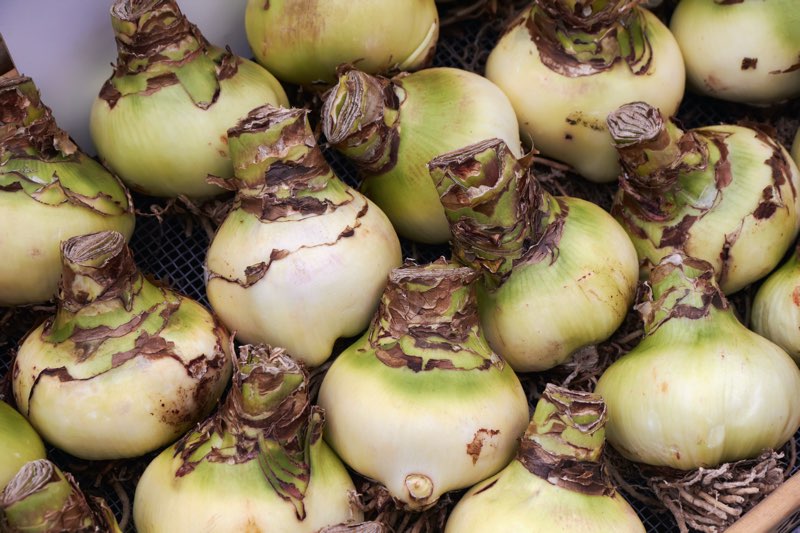
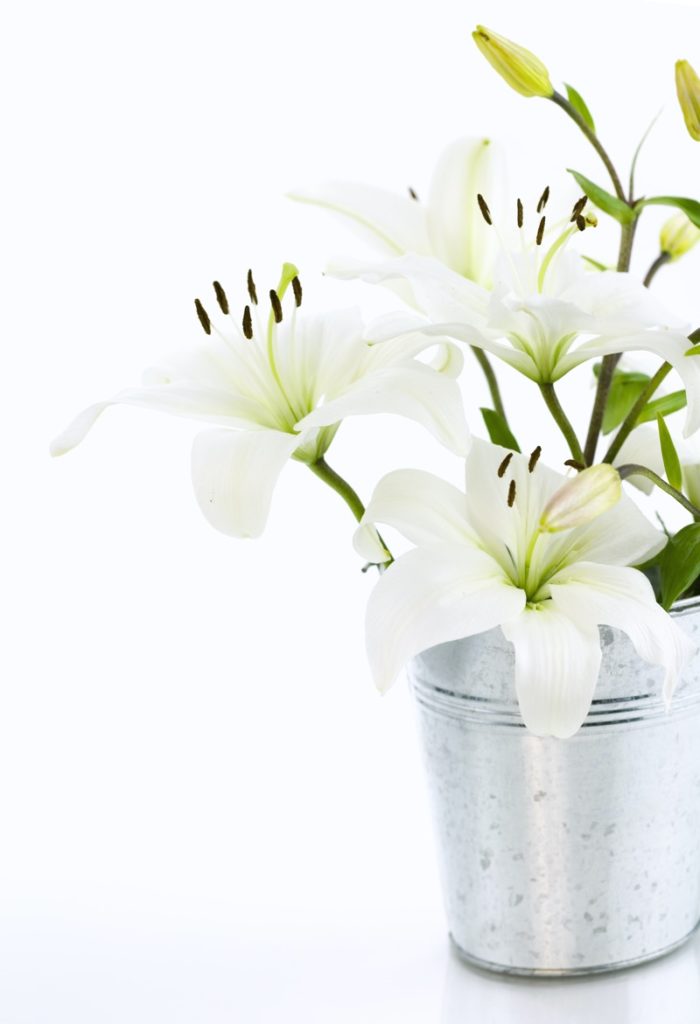
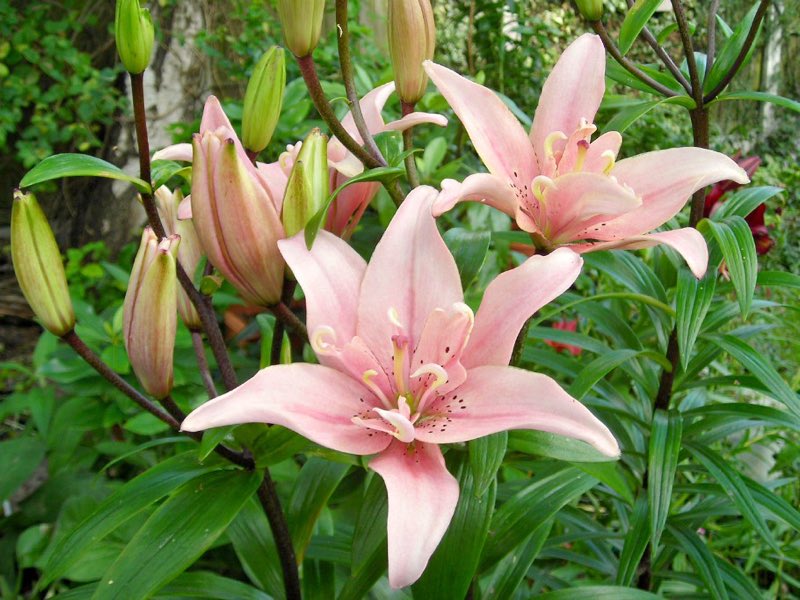
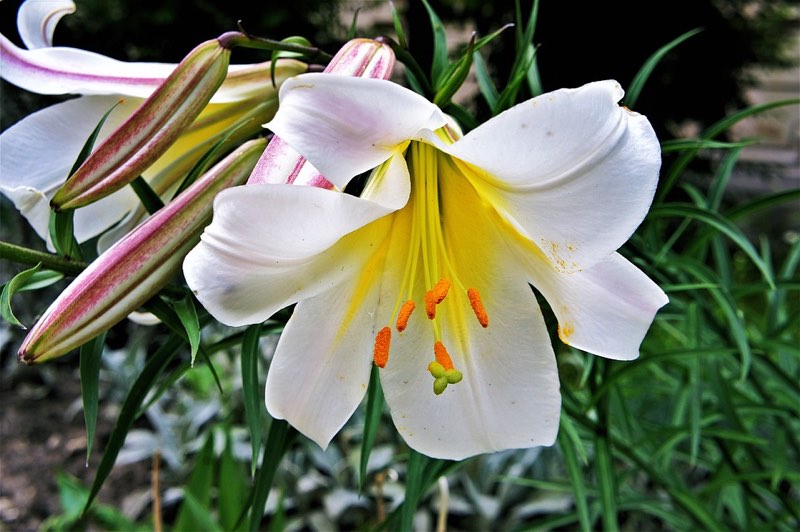
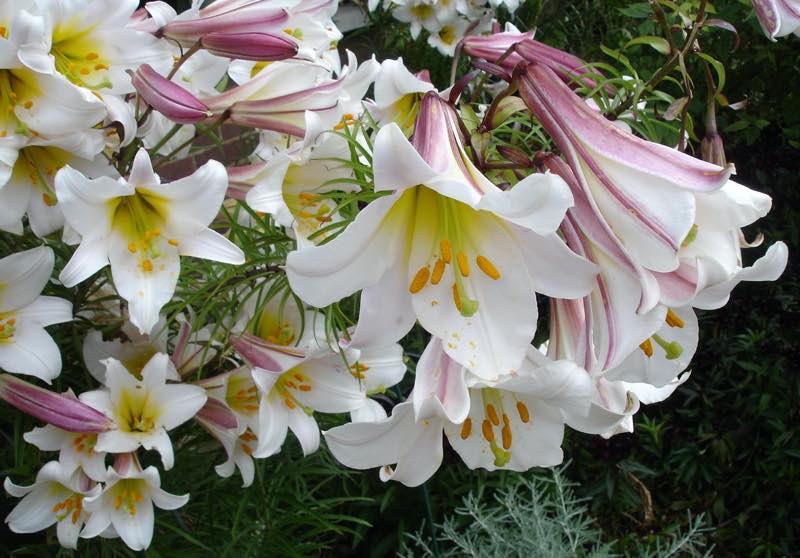
Leave a Reply